I am trying to find the ID of the closest LAT_LON in a data.frame with reference to my original data.frame. I have already figured this out by merging both data.frames on a unique identifier and the calculating the distance based on the distHaverSine function from geosphere. Now, I want to take step further and join the data.frames without the unique identifier and find ID the nearest LAT-LON.
I have used the following code after merging:
v3 <-v2 %>% mutate(CTD = distHaversine(cbind(LON.x, LAT.x), cbind(LON.y, LAT.y)))
DATA:
loc <- data.frame(station = c('Baker Street','Bank'),
lat = c(51.522236,51.5134047),
lng = c(-0.157080, -0.08905843),
postcode = c('NW1','EC3V'))
stop <- data.frame(station = c('Angel','Barbican','Barons Court','Bayswater'),
lat = c(51.53253,51.520865,51.490281,51.51224),
lng = c(-0.10579,-0.097758,-0.214340,-0.187569),
postcode = c('EC1V','EC1A', 'W14', 'W2'))
As a final result I would like something like this:
df <- data.frame(loc = c('Baker Street','Bank','Baker Street','Bank','Baker Street','Bank','Baker
Street','Bank'),
stop = c('Angel','Barbican','Barons Court','Bayswater','Angel','Barbican','Barons Court','Bayswater'),
dist = c('x','x','x','x','x','x','x','x'),
lat = c(51.53253,51.520865,51.490281,51.51224,51.53253,51.520865,51.490281,51.51224),
lng = c(-0.10579,-0.097758,-0.214340,-0.187569,-0.10579,-0.097758,-0.214340,-0.187569),
postcode = c('EC1V','EC1A', 'W14', 'W2','EC1V','EC1A', 'W14', 'W2')
)
Any help is appreciated. Thanks.
